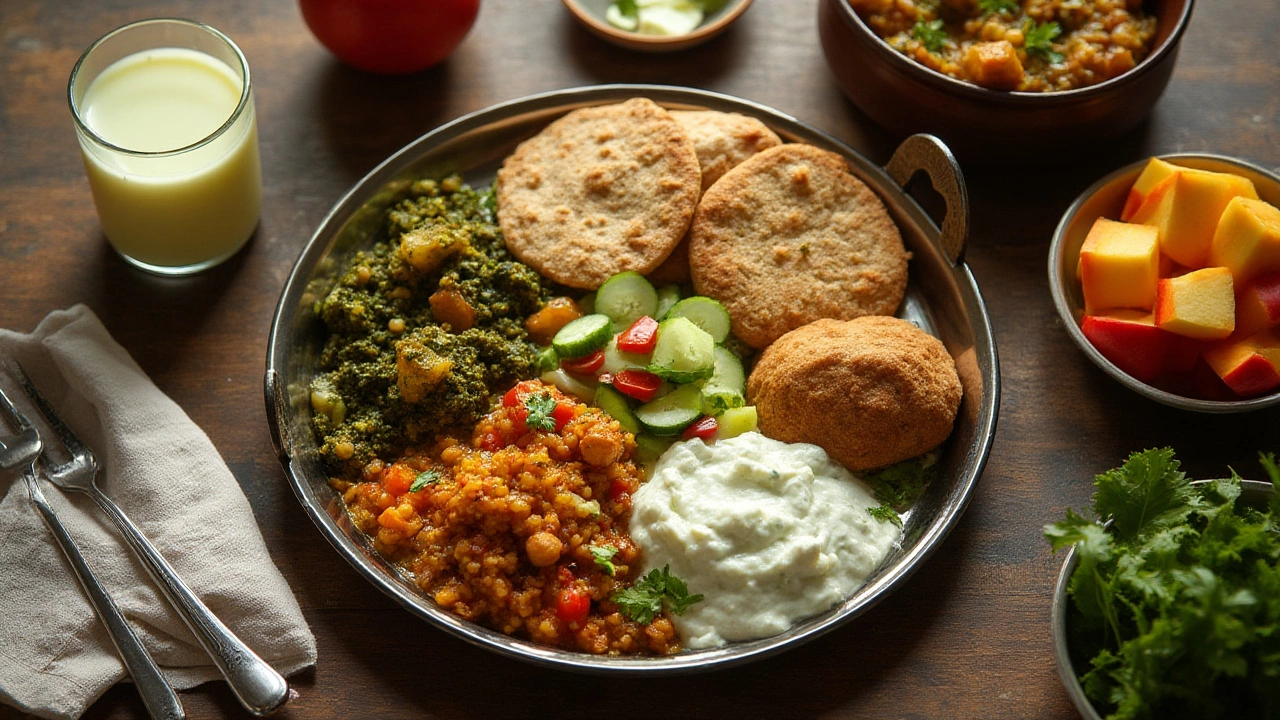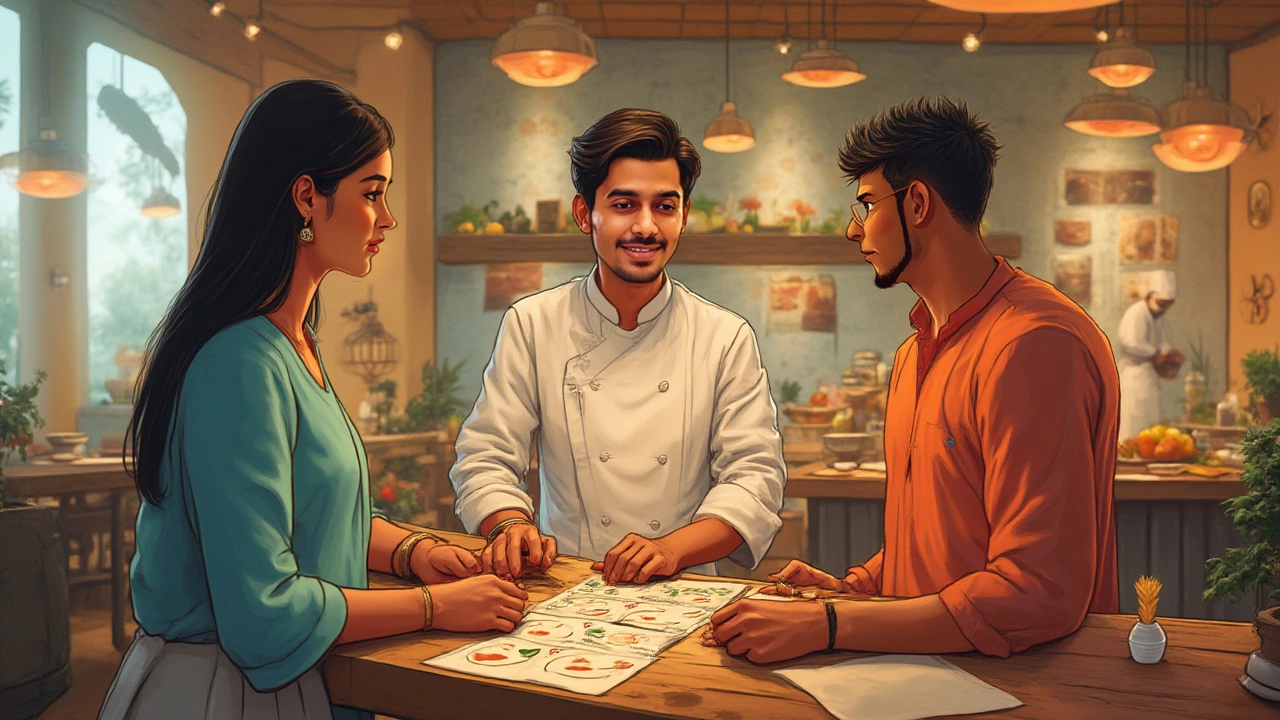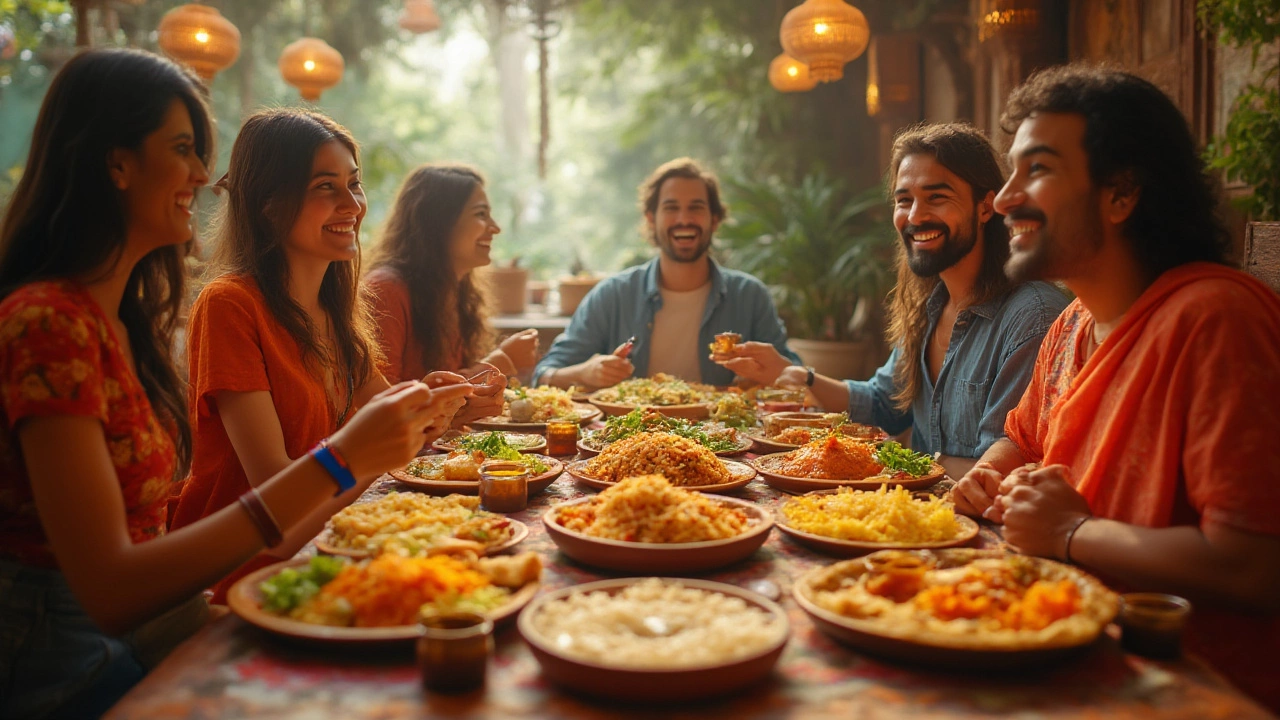Ever stare at a colorful Indian restaurant menu and freeze, torn between samosas and saag? Spice aromas tug at your senses, but your head’s reminding you about cholesterol. Turns out, you actually can enjoy Indian food and not feel weighed down by butter, cream, or carb overload after. There’s a sweet spot where incredible flavors and healthy choices meet… but you have to know what to look for. Let’s bust the myth that eating healthy at an Indian spot is impossible. In fact, there’s a whole world of dishes that are light on oil, rich in protein, and big on vegetables—and they taste genuinely amazing. I’m about to show you exactly what to pick, what to skip, and how to hack that takeout menu like a pro.
The Foundations: Picking the Healthiest Indian Dishes
The biggest misconception about Indian food is that “it’s all heavy or fried.” Not true. India is a vast country with hundreds of cooking styles—think about the curries of Kerala, lentil stews of Gujarat, fresh chutneys of Bengal. If you focus on dishes built with legumes, vegetables, and lean proteins—without deep frying or smothering in cream—you’re off to a good start.
The real stars: Lentils (dal), chickpeas (chana), and kidney beans (rajma) are protein powerhouses and naturally gluten-free. According to a study by the National Institute of Nutrition in Hyderabad, traditional dals are high in fiber and can help control blood sugar and cholesterol. Vegetables and fresh herbs show up in “sabzis” (stir fries), “bhartas” (smoky mashed dishes), and light soups. Skip the thick creams and gravies when you can, especially those labeled “makhani” or “malai.” Instead, go for tomato-based or dry-cooked recipes.
The healthiest mains to order?
- Tandoori chicken or fish: Marinated in yogurt and spices, then baked in a clay oven with basically zero oil. Lots of flavor, low in fat.
- Baingan Bharta: Roasted eggplant mashed with spices and tomatoes. All the smoky goodness, hardly any calories.
- Chana Masala: Chickpeas stewed with tomatoes and warming spices. Chickpeas are full of iron and fiber.
- Dal Tadka or Dal Makhani (lightly made): Pulses cooked with spices, sometimes with a little oil. Ask for less ghee (clarified butter) if you want to cut calories.
- Palak Paneer: Spinach and Indian cottage cheese. Spinach’s high iron and the paneer is protein-rich—just ask for less cream added.
- Rajma: Kidney bean curry is pure comfort, especially when paired with brown rice.
- Grilled or roasted fish: Many coastal dishes skip heavy sauces in favor of tangy, herb-packed marinades.
If you’re at a buffet, check which dishes look least oily. Some modern Indian restaurants even list calories or mark lighter items, a trend that’s catching on in larger cities since 2023.

Sidekicks and Swaps: Making Your Meal Even Healthier
Now, you might wonder, "What about naan, samosas, or that irresistible mango lassi?" Yeah, Indian carbs and creamy drinks are tough to pass up. But there are swaps that won’t kill the vibe or your eating plan. Whole wheat roti is a smart choice—way lighter than buttery naan (which often has white flour and ghee). Whenever possible, grab brown rice or steamed basmati over fried rice or biryani. Basmati rice, especially, has a lower glycemic index than most Western white rice, meaning it won’t spike your blood sugar as hard.
Chutneys can be sneaky, though. While mint and coriander chutney is fresh and low-cal, coconut or sweetened mango versions add extra calories and sugar fast. If you’re a fan of yogurt, raita is a fantastic cooling side—just make sure it’s made with plain yogurt, not one doctored with sugar or cream. Yogurt helps your gut health, thanks to probiotics, and tones down fiery dishes.
If you can’t skip snacks, there are smarter picks. Bhel puri is a street snack made mainly with puffed rice, veggies, and tangy tamarind. It’s crunchy and filling but much lower in oil than pakoras or samosas. Lentil-based snacks like dhokla (steamed savory cakes) or idli (fermented rice cakes) are steamed rather than fried and lighter on your stomach.
Want to drink something? Lassi made with unsweetened yogurt is actually good for you; it’s loaded with protein and helps digest spices. Just ask for “salted” or “spiced” versions and go easy on sugar. Fresh lime soda—unsweetened—is another classic thirst quencher, especially in summer. And always hydrate well; spicy food plus hot weather is a combo that begs for water.
Now, here’s a table with popular menu items, what’s in them, and their average calorie counts. Keep in mind these numbers are rough estimates, as restaurants tweak their recipes.
| Dish | Main Ingredients | Average Calories (1 serving) | Healthy? |
|---|---|---|---|
| Tandoori Chicken | Chicken, yogurt, spices | 260 | Yes |
| Samosa (1 piece) | Potato, pastry, oil | 135 | No |
| Chana Masala | Chickpeas, tomatoes, spices | 210 | Yes |
| Chicken Tikka Masala | Chicken, cream, tomatoes | 450 | No |
| Dal Tadka | Lentils, spices | 150 | Yes |
| Naan (1 piece) | White flour, yeast, ghee | 260 | No |
| Whole Wheat Roti | Whole wheat flour, water | 100 | Yes |
| Saag Paneer | Spinach, paneer, cream | 320 | Sometimes |
| Lassi (sweetened) | Yogurt, sugar | 310 | No |
If you really want to eat out often and keep it healthy, ask the staff about cooking methods. Don’t be shy! It’s become much more common to request less oil or to grill instead of fry. Since 2022, a wave of health-conscious Indian restaurants in Mumbai, New York, and London are even putting air-fried samosas on their menu. Progress!

Eating Healthy at Indian Restaurants: Smart Strategies and Realistic Tips
Ordering healthy Indian food isn’t about self-denial—it’s about strategy. Start by scanning the menu for veggie-rich options and tandoor-grilled proteins, and build your meal around those. Balance is key. If you want one indulgent dish, pair it with lighter sides. Don’t assume something vegetarian is always healthier—paneer tikka is lighter than paneer butter masala, which can be swimming in cream.
What about sharing? Indian meals are made for family-style eating, with lots of sharing from big platters. If you’re with friends, this is a secret advantage. Split rich curries or fried snacks, and pile your own plate high with the healthiest Indian food—the dals, grilled meats, and veggie curries. You’ll get a taste of everything, minus the food coma.
Watching sodium or spice? Indian food can go heavy on salt, especially in restaurants. Don’t be scared to ask for lighter salt, or get yogurt-based raita to cool things down. If you have food allergies or need gluten-free food, most dal, sabzi, grilled dishes, and rice are naturally safe bets—but always check for hidden ingredients like flour in sauces. Vegan? Chana masala, aloo gobi (potato and cauliflower stir fry), and bhindi masala (okra saute) never need dairy or cream.
Worried about portion control? Indian restaurant servings can be huge, especially in the US and UK. Try boxing up half before you even start eating. Your future self will thank you on lunch break tomorrow.
If you’re cooking at home and want to re-create healthier Indian food: use less oil, swap cream for unsweetened yogurt or coconut milk, and load up on turmeric, cumin, and fresh herbs for flavor (and antioxidants). Even classics like butter chicken can be made lighter with simple tweaks.
People often freak out about spice, but not all Indian food is searingly hot. If you’re sensitive, tell your server upfront—dishes can be toned down easily. South Indian food tends to rely on coconut and mustard seeds, and usually feels lighter than North Indian heavy-cream creations. Give dosa (fermented rice and lentil crepes) or sambar (spicy lentil stew) a try—they’re as filling as they are comforting, and rarely come drenched in fat.
Some quick-fire tips before you order:
- Look for tomato-based or dry-cooked curries.
- Swap naan for roti, or even skip the bread if you’re doing low-carb.
- Go for salads like kachumber (cucumber, tomato, onion) for a fresh, low-cal crunch.
- Order “on the side” for sauces, and add only as much as you need.
- Try ending your meal with a piece of fruit or a few bites of kheer (rice pudding), instead of full-fat laddoos or gulab jamun.
- Share appetizers and desserts to keep portions happy but smaller.
- If eating at home, batch-cook dal or veggie curries—healthy meal prep that freezes beautifully.
Just because you’re being health-conscious doesn’t mean stripping away the pleasure of Indian food. On the contrary, some of the most delicious, comforting, and satisfying plates are also the most nutritious. You just have to know how to hunt for them amidst the spices and sauces. So order with curiosity, enjoy every bite, and let Indian food show off its healthy side—bold, vibrant, and endlessly forgiving.
